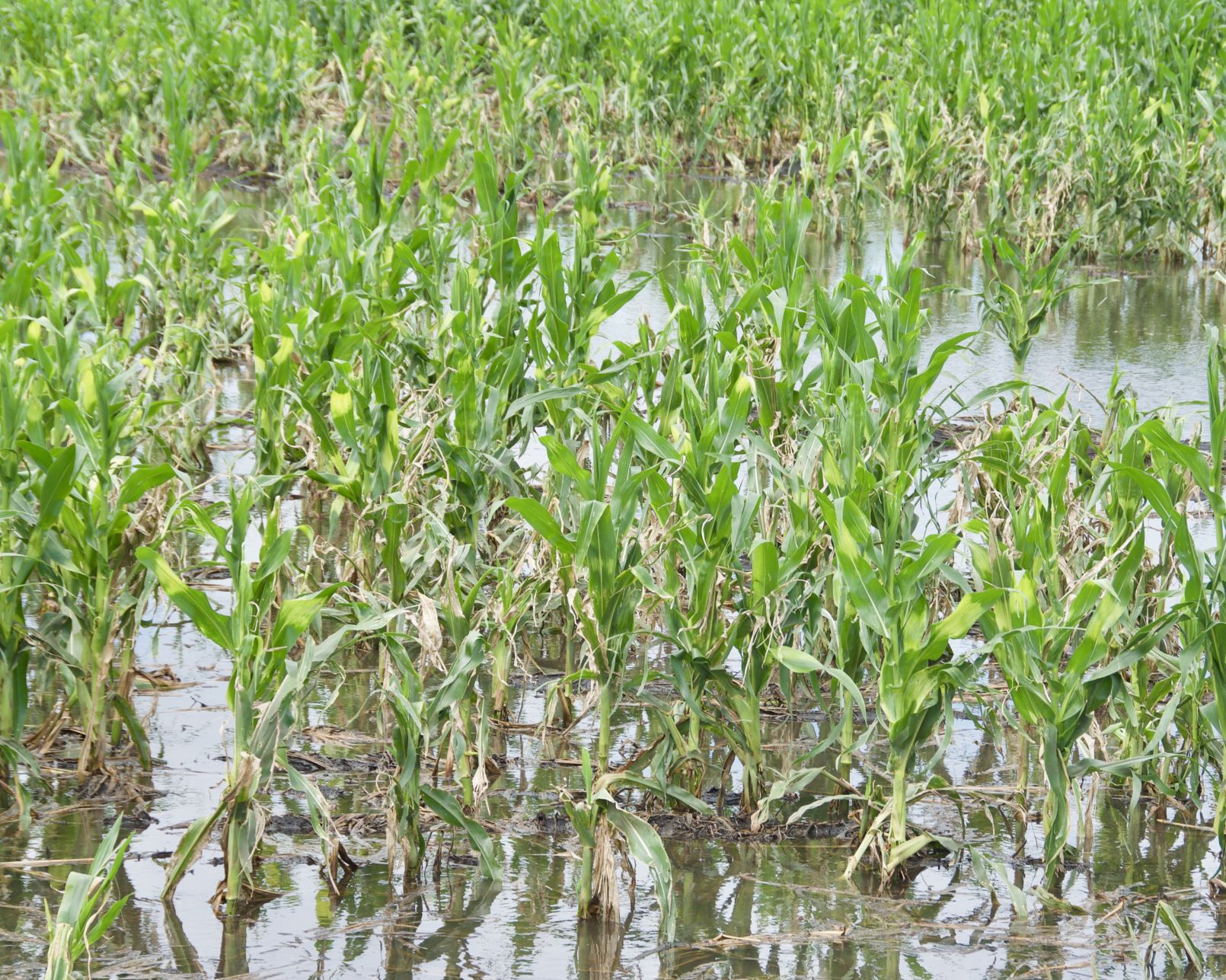Some areas of the country are dealing with fires and drought, while areas of Iowa and Nebraska are dealing with flood worries and how it affects crops.
Alison Robertson, Iowa State University associate professor of plant pathology and microbiology, says wet growing conditions may lead to potential corn diseases such as Physoderma brown spot, node rot and gray leaf spot.
“Physoderma brown spot and node rot risks increase with warm weather and excessively wet conditions when water pools and all this happens during the early vegetative V3 to V9 stages of corn growth,” Robertson said.
She said to scout fields and look for very small round or oval lesions that are yellowish-brown in color and occur in high numbers and in broad bands across the leaves. Dark-purple or black spots occur on the midrib, with these helping to distinguish this disease from others. Symptoms can also appear on the stalk, leaf sheath and husk.
Physoderma node rot symptoms are recognized as snapping of the corn stalk at one of the lower nodes during mid-reproductive stages. The node is often rotted, but the pith is not.
“There are no in-season management options for these diseases, although some fungicides are labeled for Physoderma brown spot,” Robertson said.
Warm temperatures and relative humidity greater than 90 percent favor gray leaf spot development. In Iowa, gray leaf spot starts to develop around tasseling and after long periods of heavy dew and overcast conditions. Gray leaf spot can be more severe in fields of a corn after corn rotation.
Gray leaf spot lesions begin as small, oval or jagged light-tan spots that expand to become long, narrow and rectangular. The lesions are always confined by and expand parallel to the leaf veins. These later turn gray.
Robertson said management of gray leaf spot begins with using resistant hybrids in fields where the disease could occur. Rotating crops can help prevent this. Fungicides are usually effective at managing the disease.
Roger Elmore, University of Nebraska-Lincoln Extension cropping systems agronomist, said producers should look for Pythium, which is a seedling disease common with cool, wet soil conditions.
“Typical Pythium symptoms will include seed decay, pre-emergent seedling rot, and seedling damping off after emergence. If the plant has emerged, it often may have a root system where the outer layer can be easily pulled off and the center of the root will stay intact,” Elmore said.
Phytophthora will often become present with heavy rains and warmer temperatures. Fields with a history of the disease are likely to see the disease again when soils are saturated.
Symptoms of Phytphthora are seed decay and pre-emergence seedling rot, and seeding damping off after emergence. Seedlings typically have darkened stems at the base of the plant coming up from the soil line.
Seed treatment is the best prevention. Post-emergence problems should be dealt with on a case-by-case basis, according to Elmore.
“Phytophthora can kill plants at any stage of development, but Pythium typically doesn’t kill plants much past the V5 growth stage,” Elmore said.
Scouting fields is the best way to determine problems due to excessive moisture.
Jennifer Carrico can be reached at 515-833-2120 or [email protected].



